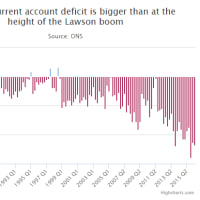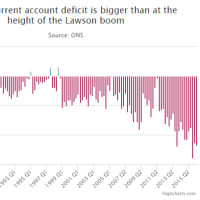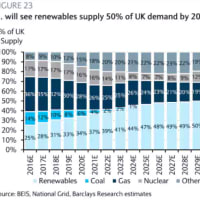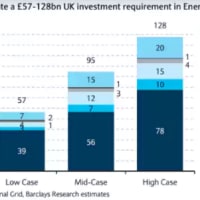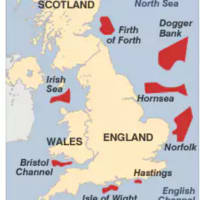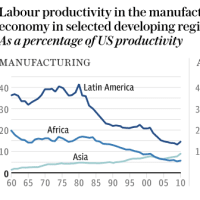こんなの、今更訊けないこんな事!のコーナーでしょう。
私なんかは「何がわからないかわからない」類ですからね。
自分の為のコーナーっちゃコーナーですね。
私なんて嗅覚だけですからね、キュウカク。
ざーーーーーっと新聞反ダースほども見回して、霊感でひょいひょいと記事を拾い上げて、ぺたぺたとここに覚書してるだけですからね。
ホント、なんもしらんのです。
そんな私が「お~、よくわかるわい」と思った記事が、最近お気に入りのテレグラフのこの記事。
Business comment: It's time to reach for your tin hats as fallout threatens
(ビジネス・コメント:フォールアウトの恐れあり。ヘルメットをご用意下さい)
By Roger Bootle
Telegraph:02/07/2007
私なんかは「何がわからないかわからない」類ですからね。
自分の為のコーナーっちゃコーナーですね。
私なんて嗅覚だけですからね、キュウカク。
ざーーーーーっと新聞反ダースほども見回して、霊感でひょいひょいと記事を拾い上げて、ぺたぺたとここに覚書してるだけですからね。
ホント、なんもしらんのです。
そんな私が「お~、よくわかるわい」と思った記事が、最近お気に入りのテレグラフのこの記事。
Business comment: It's time to reach for your tin hats as fallout threatens
(ビジネス・コメント:フォールアウトの恐れあり。ヘルメットをご用意下さい)
By Roger Bootle
Telegraph:02/07/2007
Last week there was speculation that the rise in sub-prime mortgage delinquencies in the US, and in particular the losses on collateralised mortgage obligations(CMOs), will cause a financial crisis. Are these concerns justified?つづく
先週、アメリカでのサブプライム住宅ローン滞納、特に不動産担保証券(CMO)の損失の増加が、金融危機を生じるのではないか、との憶測があった。
これらの心配は、あたっているのか?
Over the past year or two, US mortgage lenders have made increasingly risky loans to less reliable borrowers (the "sub-prime" market). Given that the US housing market has turned down sharply, this was bound to cause some lenders to lose a lot of money. Indeed, some sub-prime lenders have been forced to shut up shop.
この1-2年、アメリカ住宅ローン貸付機関は、よりリスクの高いローンを、より信頼の低い借り手に貸し出してきた(これがいわゆる『サブプライム』市場)。
アメリカ住宅市場が急落した事を考えてみれば、これで一部の貸付業者が多額の金を失う事になるのは必至だ。
実際、一部のサブプライム貸付業者は店じまいせざるを得なくされてしまった。
Meanwhile, increased financial sophistication over recent years has enabled and encouraged the packaging and repackaging of such lending and its redistribution throughout the financial system.
一方、この数年間に進んだ金融高度化は、そのような貸付のパッケージングや再パッケージング、そしてその金融システム全域での再流通を可能とし、奨励した。
These packages have become ever more complex, with CMOs dividing up the default risk into different slices, with the most risky investment packages suffering wipe-out at the first sign of trouble and the least risky only suffering losses in the event of widespread mortgage meltdown. Essentially, this enabled investors to treat the mortgage market as a pick-and-mix, and those who felt able to handle high risk could benefit from higher expected returns.
これらのパッケージは、これまで以上に複雑となった。
CMOをデフォルト(滞納;債務不履行)するリスクでばらばらに分解された。
そして最もリスクの高いパーツをくっつけた、最もリスクの高い投資パッケージは、問題の序曲が流れる間に消滅。
最もリスクの低いパーツをくっつけた、最もリスクの低いパッケージは、住宅ローン・メルトダウンが蔓延してしまった場合に損失を被るだけだ。
基本的にこれは、投資家達が住宅ローン市場(モーゲージ市場)を『お好きなもの詰め放題』のように扱えるようにしたわけである。
また、リスクの高いものも乗りこなせると感じる人々は、より高い期待収益を受けられたかもしれない。
But this freedom has also allowed over-optimistic investors to rush in where angels fear to tread.
が、この『自由』はまた、天使すら足を置くのを恐れるような危うい場所へと、余りにも楽天的過ぎる投資家達を殺到させてしまった。
Two funds run by Bear Stearns have taken large losses on the most risky parts of the US mortgage market.
ベア・スターンズが運用する2つのファンドは、アメリカ住宅ローン市場の、最もリスクの高い部分で、莫大な損失を被った。
What rattled other investors was the fear that these funds would then be forced to sell off their other assets in a "fire sale" that would swamp these markets and lead to a collapse in prices.
他の投資家達を震え上がらせたのは、これらのファンドがその後、他のアセット(資産)『叩き売り』せざるを得なくなるのではないか、という恐怖だった。
ちなみに、この叩き売りは、これらの市場を水没させ価格崩壊に繋がるかもしれないものである。
In the end, loans from the Bear Stearns parent company to their troubled offspring have made such forced sales less likely in this instance.
結局、親会社ベア・スターンズからの問題児ファンドへの融資のおかげで、そのような叩き売りの可能性は取り敢えず低くなっている。
But still the worry persists that even if it is not here, somewhere out there something nasty is lurking in the woodwork.
しかし、それでも、ここでなくとも、どこか別の場所で、何かいや~なものがコソコソしているのではないか、という心配は続いている。
These developments should not be seen as some isolated bit of arcania relating only to the US mortgage market.
これらの展開はアメリカ住宅ローン市場にしか関係のない、ここだけの例外の単発の事、と考えられるべきではない。
This is just one aspect of a general trend in financial markets towards taking on increased risk at apparently lower rewards. This tendency is visible in the spreads ruling for corporate debt over government debt, emerging market government debt over developed country debt, second-line property over prime property - the list goes on and on.
これは金融市場における、より小さな見返りの為により大きなリスクを取る、という方向性への一般的トレンドの一要素でしかない。
この傾向は、国債よりも社債、先進国の国債よりも途上国の国債、一流物件よりも二流物件などなど、このようにリストは永遠に続くのだが、このようなスプレッドに顕著だ。










